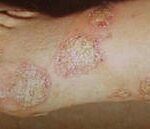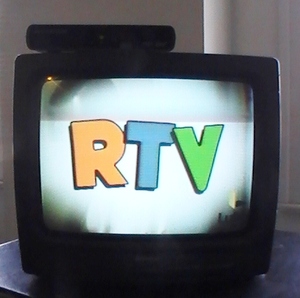Forget the wildly inaccurate “Armageddon” with a meteor the size of Texas heading for Earth, incredibly invisible until a few weeks before impact, despite being bigger than any known asteroid in the Solar System. The fact is, there are plenty of real asteroids out there in near earth orbit that are merely capable of ending the itch of psoriasis, continuing reruns of Law and Order, and civilization. With or without Bruce Willis’s help, they’re ready to smash into the Earth unless stopped or induced to step aside. That’s what former Apollo astronaut Russell “Rusty” Schweickart is into these days with his B612 Foundation. This is from a transcript of my interview with Schweickart about the subject of dealing with the threat of Near Earth Objects. I’ve edited a bit for length and readability.
DEFINITIONS
Q: Just so we know where we are, can you provide a definition of near earth objects?
A: By and large, near earth objects really mean “near earth asteroids.” That is, asteroids which happen to have gotten bumped out of the main belt, maybe millions, maybe hundreds of millions of years ago, and today circulate with orbits that cross the orbit of the earth. Because the orbits of these near earth objects cross the orbit of the earth they can occasionally hit the Earth. There are also, a very small number, perhaps 1%, 2% of near earth objects, we refer to as as near earth comets, that is old comets that have basically lost most of their moisture and therefore they don’t have tails anymore and they circulate in about the same kinds of orbits that the near earth asteroids do, so we throw them together and call them all near earth objects.
Q: If an asteroid comes within a few diameters of the moon, is that still considered a near earth object?
A: Oh, yes, definitely. Anything which comes within about 1/20th of the distance of the sun from the Earth is not only considered a near earth object, but we have another slightly higher class called P.H.A., or potentially hazardous asteroid, that is, anything which comes that close has the potential through small perturbations in its orbit over time to change its orbit enough that it would hit the earth. So those are the ones we pay particular attention to.
You know, we have now in our database about 4,000, a little over, about 4,300, near earth objects that we have discovered and tracked and we now have their orbits pinned down. The real issue is not the 4,000 that we have in the database, but the hundreds of thousands that we do not have in our database, and those are the ones that can surprise us and catch us off guard.
NUKE ‘EM TILL THEY GLOW
Q: As far as disaster movies go there are big dumb movies like “Armageddon” showing us blowing them up with nuclear missiles. What do you think of that?
A: Well, it may make a great Hollywood movie, but it’s a very poor way to deflect an asteroid if it’s coming toward you. Generally speaking, the name of the game here is to discover these asteroids well ahead of time. As I said, we’re now up to 4,000, we’re upgrading the search programs, and in another 10 to 15 years we’ll have about 90% of the asteroids that can really do any damage on the ground in our database. Once you’ve found these asteroids by using large telescopes and plotted their orbits, then you can predict ahead of time. We’ll have decades of early warning before anything hits us and it’s those decades of early warning that give us the possibility of going out and, frankly, just gently nudging these asteroids enough that their orbit changes very slightly. Instead of hitting the earth 10 or 20 years in the future when they were going to, they now miss the earth.
You don’t need a nuclear weapon or for that matter any kind of explosion. If you use something like that, number one, you’re not really sure what’s going to happen because these things are kind of spongy, or fragile, they can break up and fragment, in which case you may have a bigger problem when you’re done than when you started. Plus, the fact that you’re talking about nuclear weapons in space, and nobody likes that idea, it’s a very bad idea. In fact, you have treaty against it. There are better ways to do it and they’re much less expensive and they’re a heckuva lot safer.
A LITTLE NUDGE
Q: On the other hand, “Armageddon” probably could’ve paid for Apollo 9.
A: (Laughing) It could certainly pay for asteroid defense for a long time. Unfortunately, “Armageddon” and “Deep Impact”, while they may have been fun movies and while they actually did alert people that there are such things as near earth objects, they embedded in the public mind the idea that the way you handle these is send up a Bruce Willis in a manned spacecraft with a nuclear weapon and that’s absolutely the wrong thing to do in every way. You send up a very inexpensive unmanned spacecraft and you …years and years, decades ahead of time…not at the last minute…and you very gently move the asteroid slightly so it will not hit the earth.
Now, I don’t want to belittle that job, because these asteroids in some cases are so huge, I mean you’re talking billions of tons of material, even nudging it a small amount is a gargantuan problem. So, in the long run here, what we really need is NASA to develop some new technology in the form of high efficiency propulsion which will allow us to protect the earth in a comprehensive way. I say “comprehensive way” because today we do have the capability to deflect some of the asteroids that potentially threaten us, but not all of them. So, we do have to get the Congress to tell NASA, and give it some money, to develop some advanced propulsion capability which, frankly, they want to do anyway for deep space exploration.
NUDGE IT NOW
Q: What would you nudge it with now?
A: There are two ways right now with existing technology that you could do that. One we did actually, a little over a year ago on the 4th of July in 2005, people may remember that we had a mission called “Deep Impact” and we sent a spacecraft up and rammed it into a comet, a small comet. We did that not to change its orbit but in fact to blow material out from the inside of it so we could measure what the chemistry basically of the composition of the comet was. But that’s exactly the same thing. In other words you could take a small asteroid and you could send up a spacecraft and basically ram into it in the right direction. And that we have the technology to do. I mean, you could send up anything, send up a bunch of water, send up a rock, it doesn’t matter.
The trick is to rendezvous and bash into it. Now, again, a little bit like a small nuclear weapon. You know, you may break it up, especially as your talking a small asteroid which is what this would apply to. You may miss it, you may hit it a glancing blow, you’re not exactly sure what’s going to happen and after you do it, unless you got another spacecraft standing off to the side watching. You may not really be sure what you did, whether you did.
GRAVITY OF THE SITUATION
Another way to do the job is a concept which a couple of astronauts who are part of our organization developed, Ed Lu and Stan Love, in the astronaut office, came up with a concept they called the “gravitational tractor.” And in that case, that’s really an elegant solution. What you do is take a spacecraft and park it next to the asteroid, let’s say in front of it in its orbit or behind it in its orbital path, and you basically hover over it about half the diameter, half of the radius of the asteroid, above its surface. It’s a very, very weak gravity anyway from one of these asteroids…you don’t let yourself fall to the surface. You hover using very small and efficient ion engines. And the fact that you are staying there right in front of it and not letting yourself fall to the surface means that you’re pulling it with your gravity. Very, very small. I mean, less than the weight of a piece of paper. But that force gradually changes the orbit of the asteroid. And in that case, because you have a transponder on the spacecraft, and you know you’re not even touching the asteroid, you’re just hovering near it, you know exactly where you are, and therefore, exactly where the asteroid is and how much you changed its orbit. So its a very precise deflection capability but its relatively weak, so its only a certain category of deflection challenges which the gravitational tractor could meet.
BIG BLAST, LITTLE BIG BLAST
Q: This doesn’t have to be a dinosaur killer for a near earth object to be destructive.
A: When you’re talking about a dinosaur killer your talking about a mass extinction. People may be aware that not only did the dinosaurs get wiped out, but 75% of all life on the earth at the time was wiped out. That was 65 million years ago and its thought that that asteroid that hit was something on the order of 12 kilometers in diameter. I mean that’s a big asteroid, eight miles in diameter. Those are extremely rare, only about once in every 100 million years. But you know in the five billion year history of the earth, that’s happened quite a number of times. When you count the smaller asteroids, the impact is much less, you don’t have a mass extinction. Let’s say you come down to an asteroid about one kilometer to two kilometers in diameter, then you’re still talking about an impact which would have effects all around the globe. You would have dust and rocks coming in from the explosion, you would have global weather effects, it would be a civilization-ender, without any question, but it would not create the extinction of life. When you get below one or two kilometers, then you come down from planetary effect to continental effect, or to, say, something the size of a nation or the size of a state, ultimately, something like the asteroid that hit in Siberia in 1908, the Tunguska event, you’re talking about something that doesn’t even reach the ground, it exploded in the atmosphere, but the shock wave blew down 2,000 square kilometers of forest. If that had happened over a city, even hough it didn’t reach the ground, it would’ve created real serious damage, probably would’ve killed most people in a city. Now that one was probably only 50-60 meters in diameter. But if you see a 60 meter rock, that’s big. Smaller than that, the atmosphere takes care of us there.
TODAY’S ONLY OPTION
Q: So, if you go up and play the “Armageddon” scenario, you get shrapnel. Blowing it up is not necessarily an improvement.
A: Not necessarily. It could be. In some sense, until we get the right technology, until NASA gets in gear…and it can’t get in gear by itself, by the way, the Congress has to put NASA in gear, it’s not that NASA is being obstinant…but until NASA gets in gear and gets this higher propulsion capability developed, the only thing we can do is, perhaps, if we find one, and that’s a very, very low probability event that we would find one in that time frame…but if we happen to find one like that, then we may send up a nuclear weapon. It may be the only thing that we can do, even suffering the consequences of having it break up and smaller pieces come in. If you can’t do anything else, that’s probably the option of last resort, but of course what we want to do is get rid of that option of last resort and do something which is far more rational.
MORE INFORMATION
Q: Where can people get more information?
A: There are lots of places on the web. JPL (NASA’s Jet Propulsion Laboratory) has a very, very good website. You can certainly Google “near earth object” or “near earth asteroid” or “B612” for our foundation. The information is very active. For example in the JPL website, I’m looking at it right now, every night there are thousands of near earth objects seen by telescopes, and what they have to do every night is cull through these to see if anyone’s seen these before. But today there are 114 of the total 4,300 that have been found that have some probability of impacting the earth in the next 100 years. And you can check that every morning. Our site is www.B612foundation.org
WHO CARES?
Q: What kind of importance should people attach to this issue?
A: It’s an important subject. It’s not something for people to lose sleep about. The probability of being hit is fairly small in anyone’s lifetime. The reason why you want to pay attention is that when one does hit, it’s a huge event so its that extreme infrequent event but very devastating consequence, which makes it hard for people intuitively to get a sense of how important this is. It’s about the same as you or I or anybody else getting killed in an airplane accident. People get killed in airplane accidents, but the likelihood of you and I getting killed in one is about one in 20,000, something like that. But we spend literally hundreds of millions, billions of dollars a year on aviation safety in order to minimize that. On near earth objects, we spend almost nothing.
Q: I remember a phrase that got picked up for a number of news reports and programs a few years ago that there were “fewer people looking for near earth object than would staff a McDonald’s restaurant”. Everybody used that.
A: (Laughing) It was a good line.
Q: Thanks for talking with us.






